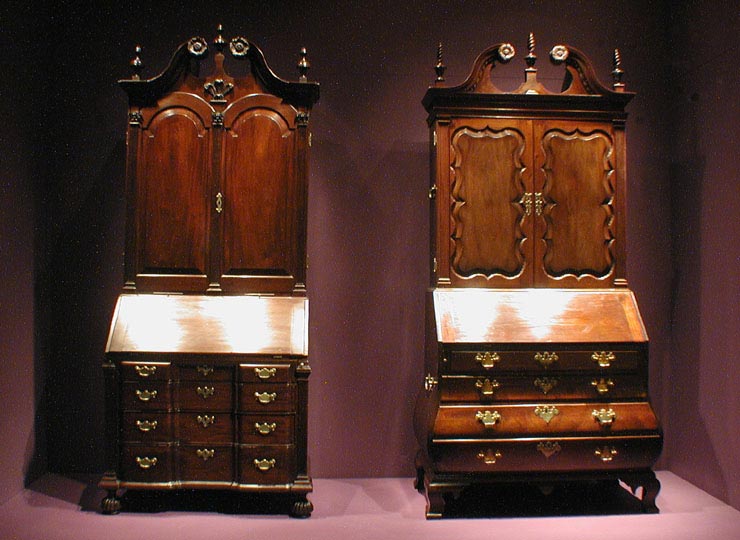
| Desk-and-bookcase Stanley Stone |
| Desk-and-bookcase Carving attributed to John Welch, Boston, c. 1750 Mahogany and white pine Lent by the Chipstone Foundation 1991.10 Fortunately, the fraudulent objects shown in this exhibition are a small portion of what the Stones collected. Most of the foundation’s furniture, including this remarkable desk-and-bookcase, wonderfully evidence the broad cabinetmaking traditions in Americas earliest cities. The unidentified cabinetmaker of this Boston piece is believed to be the first American to produce blockfront and bombé case furniture, and the skillfully rendered carving marks the work of John Welch, the most important and prolific carver in the eighteenth-century. The distinctively shaped ball feet harken back to a seventeenth-century type, as does the gilt decoration inside the bookcase. In line with the finest examples of mid eighteenth-century American furniture is the brilliantly executed design. As a while the piece exemplifies the type of first-rate colonial American furniture that Stanley and Polly Stone so eagerly and successfully assembled, and that today forms the core of the nationally recognized Chipstone Foundation collection. |